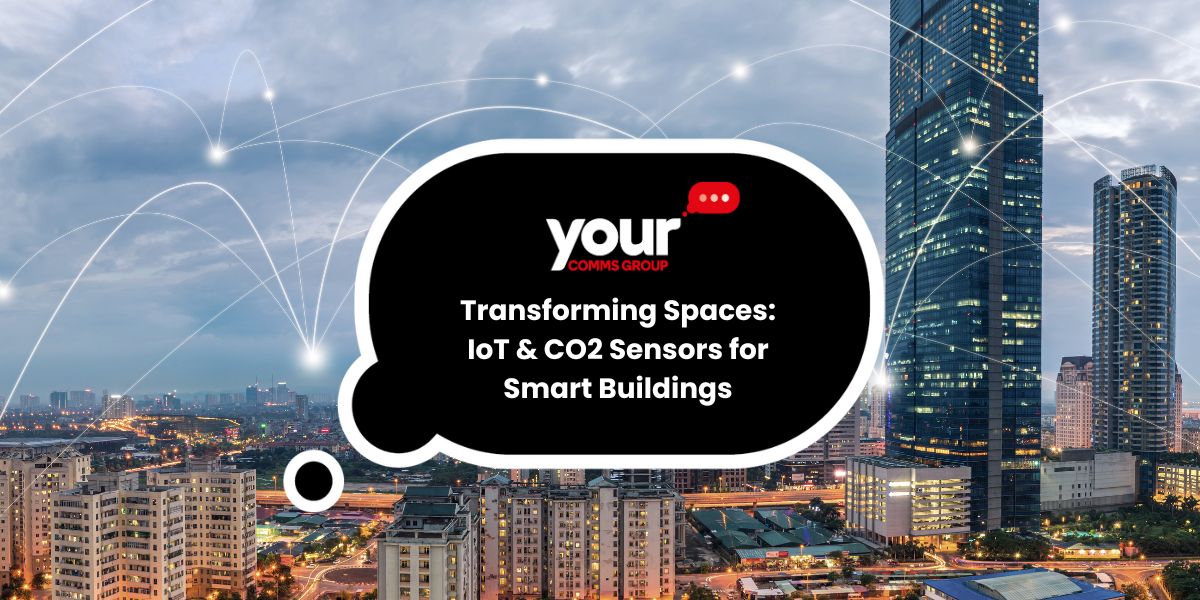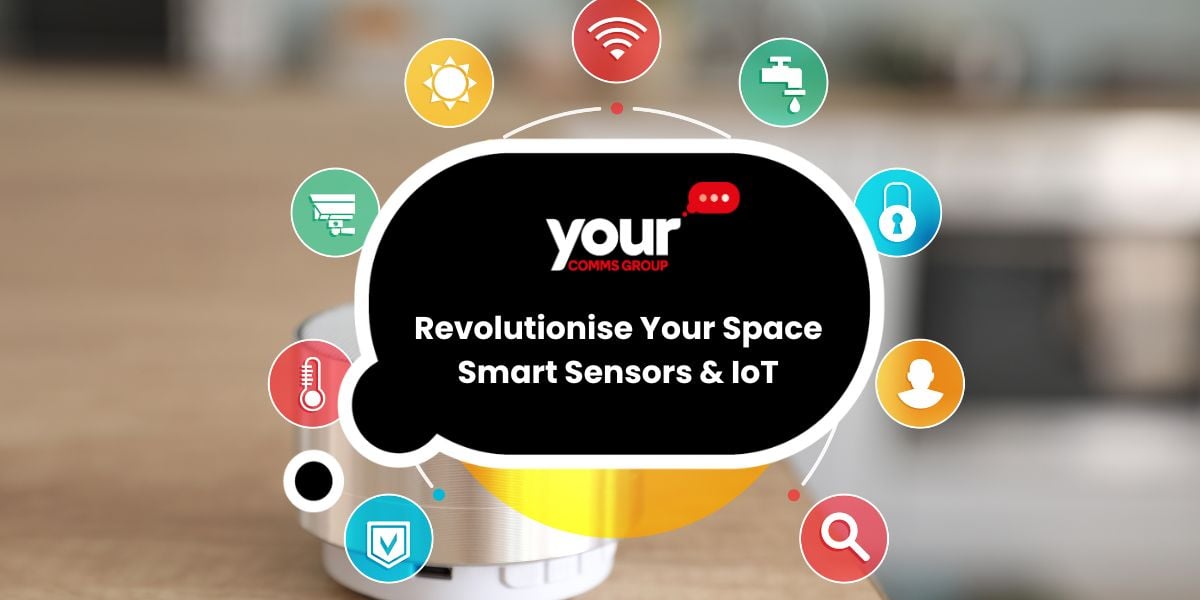Future-Proofing Your Business: The Importance of Reliable Connectivity
Reliable connectivity is crucial for every business operation nowadays as it facilitates seamless communication and supports innovative technologies....
3 min read
James Etherington : Apr 17, 2024 3:00:00 PM

In an age where the focus on sustainability and health within our living and working environments is paramount, the role of IoT-integrated CO2 sensors in smart buildings emerges as a cornerstone for creating spaces that are not just efficient but also health-conscious.
Let’s explore the transformative potential of these technologies in ensuring indoor air quality, optimising energy consumption, and enhancing the well-being of building occupants with Your Comms Group.

Building air quality directly influences occupants’ health, productivity, and comfort. Research indicates that high levels of CO2 can lead to reduced cognitive function, fatigue, and other health concerns. In dense urban environments, where outdoor green spaces are scarce, maintaining optimal indoor air quality presents a significant challenge that CO2 sensors adeptly address by providing real-time insights into the indoor atmosphere, enabling proactive air quality management.
To ensure effective deployment and utilisation, several crucial factors must be considered when incorporating CO2 monitors into your smart building infrastructure. Here's what to keep in mind:

Integrating CO2 sensors with IoT technology marks a leap forward in developing smart buildings. This combination allows real-time communication between sensors and building management systems, enabling a responsive and adaptive environment.
Such a setup ensures that ventilation and other environmental controls can be dynamically adjusted to the detected air quality and occupancy levels, significantly improving energy efficiency and occupant health.
The intersection of IoT and CO2 monitoring opens up a new realm of possibilities for intelligent building management. Here's how the data from CO2 monitors can be utilised in an IoT context:
Incorporating IoT technology amplifies the benefits of CO2 monitoring in smart buildings and paves the way for innovative solutions to air quality management, energy efficiency, and occupant well-being.
As IoT technology advances, the potential for creating intelligent, responsive environments that adapt to the needs of their occupants will continue to grow, marking a new era in intelligent building development.
Integrating CO2 sensors with IoT solutions directly contributes to energy savings and sustainability efforts. The U.S. Environmental Protection Agency (EPA) highlights that intelligent building technologies can reduce energy consumption by optimising the operation of heating, ventilation, and air conditioning systems. [1]
These technologies enable buildings to use energy more wisely, reducing waste and supporting broader sustainability goals while maintaining a healthy indoor environment.
As we look to the future, the importance of integrating sophisticated IoT solutions in our buildings cannot be overstated. Your Comms Group stands ready to propel your buildings into this new era with its comprehensive suite of IoT solutions.
Whether it’s enhancing indoor air quality with intelligent CO2 sensors, optimising energy efficiency, or ensuring the health and comfort of occupants, Your Comms Group provides the key to unlocking the full potential of your smart building aspirations. Take the next step towards creating more responsive, efficient, and considerate buildings.
Discover how Your Comms Group’s IoT solutions can transform your space into a healthier, more sustainable environment.
[1] U.S. Environmental Protection Agency (EPA) on advancing energy management through smart homes and buildings, highlighting the significant energy savings achievable with innovative technologies: Read more at EPA.

Reliable connectivity is crucial for every business operation nowadays as it facilitates seamless communication and supports innovative technologies....

Integrating IoT (Internet of Things) technologies into the workplace is a practical and effective strategy for organisations seeking to enhance...

The digital age heralds a transformative building era, turning static structures into interactive, intelligent environments. This metamorphosis is...